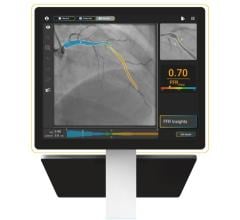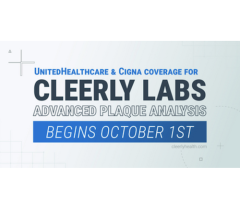
May 15, 2018 – The large-scale, international randomized PRESERVE clinical trial found high-risk patients for renal complications undergoing angiography had no benefit of intravenous sodium bicarbonate over intravenous sodium chloride or of oral acetylcysteine over placebo for the prevention of death, need for dialysis, or persistent decline in kidney function. The results were presented at the 2018 Society for Cardiovascular Angiography and Interventions (SCAI) Scientific Sessions.
The results are a subgroup analysis of trial participants who underwent percutaneous coronary intervention (PCI) and compares the efficacy of intravenous (IV) sodium bicarbonate with IV sodium chloride. The study also compared oral acetylcysteine to placebo in this high-risk patient group. The initial trial results were first presented in November 2017 and published in the New England Journal of Medicine (NEJM).[1]
Contrast-associated acute kidney injury (CAAKI) affects about 7 percent of patients undergoing PCI and it can increase morbidity and mortality. Two widely used strategies to prevent CAAKI in clinical practice include the use of IV sodium bicarbonate to induce urine alkalization and scavenging of reactive oxygen species th¢rough periprocedural oral administration of acetylcysteine. Results of clinical trials and meta-analyses of these interventions have yielded inconsistent results.
Using a 2 x 2 factorial design, PRESERVE randomly assigned 4,465 patients with chronic kidney disease undergoing angiography to IV sodium bicarbonate (1.26 percent) or IV sodium chloride (0.9 percent) and five days of oral acetylcysteine (NAC) or placebo. Patients were enrolled at 53 medical centers in the United States (35 Veterans Affairs sites), Australia (13 sites), Malaysia (3 sites), and New Zealand (2 sites). The primary endpoint was a composite of death, need for dialysis, or persistent kidney impairment. The authors conducted a subgroup analysis of the efficacy of these interventions in participants who underwent PCI.
A total of 1,161 patients with CKD underwent PCI and more than 500 patients were included in each treatment arm. Specifically, the number of patients randomized to IV sodium bicarbonate, IV sodium chloride, acetylcysteine, and placebo was 568, 593, 598, and 563, respectively. The primary endpoint was seen in approximately 2.6 percent of patients in the bicarbonate group, 4 percent in the saline group, 3.8 percent in NAC group, and 2.8 percent in the placebo group. These differences were not statistically significant. Neither IV sodium bicarbonate (compared with IV sodium chloride) nor oral acetylcysteine (compared to placebo) were superior in reducing serious adverse 90-day events or CAAKI.
“The subgroup analysis shows that sodium chloride should remain the standard of care for the prevention of adverse renal outcomes in patients undergoing PCI,” said lead author Santiago Garcia, M.D., University of Minnesota and Minneapolis VA Healthcare System. “Similar to the parent trial, we did not see a benefit in using bicarbonate or oral acetylcysteine in high-risk patients undergoing PCI. It’s time to discontinue these interventions in the catheterization laboratory for the sole purpose of renal protection and think about alternative strategies that can improve patient-centered outcomes.”
The study is funded by the U.S. Department of Veterans Affairs Office of Research and Development and the National Health and Medical Research Council of Australia.
Watch the VIDEO "Strategies to Avoid Acute Kidney Injury Caused by Cath Lab Contrast," an interview with Roxana Mehran, M.D.
Watch the VIDEO "How to Avoid Acute Kidney Injury in the Cath Lab," an interview with Hitinder Gurm, M.D.
Complete listing of SCAI 2018 late-breaking trials with links to articles.
References:


 October 24, 2025
October 24, 2025 









